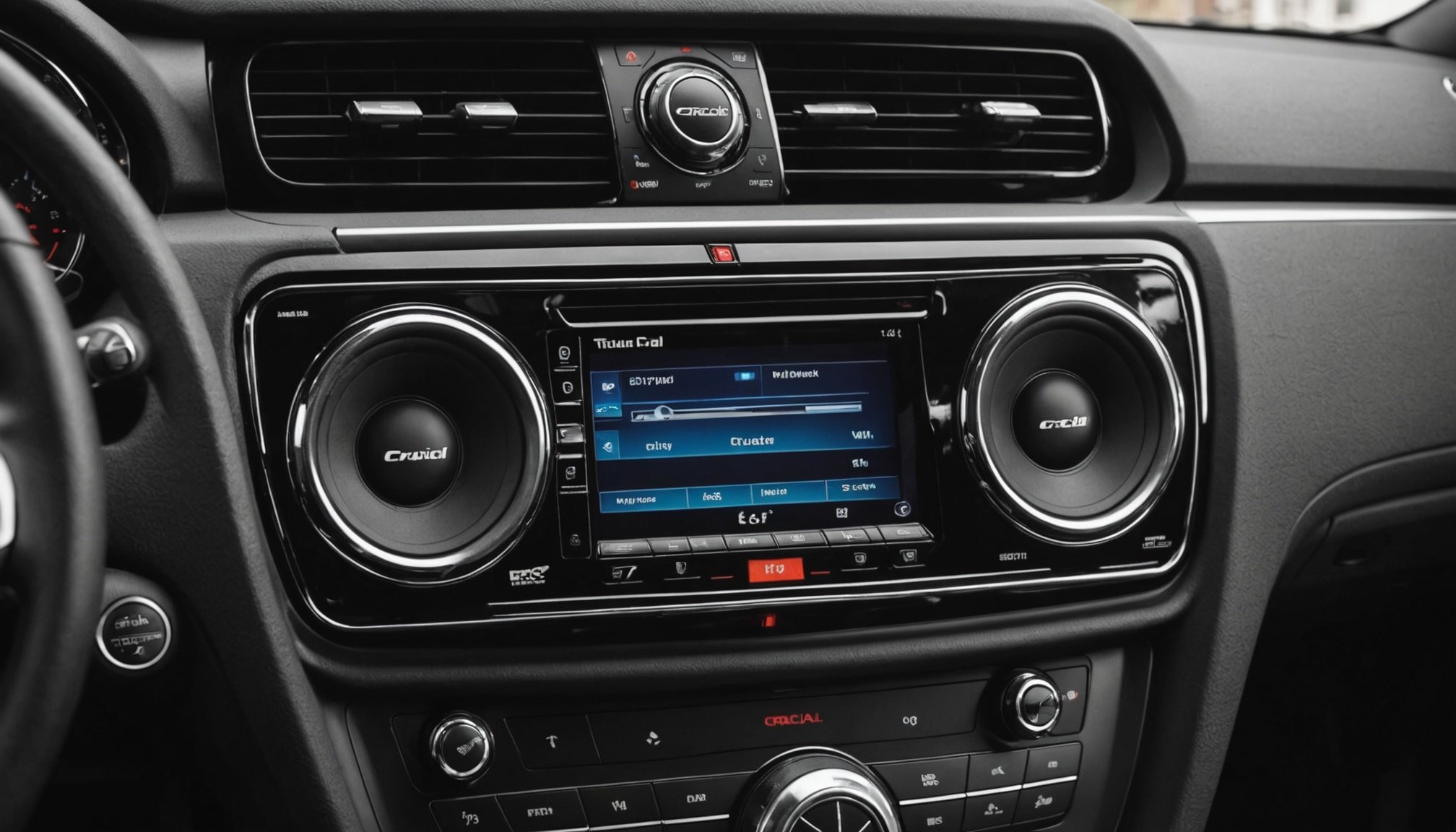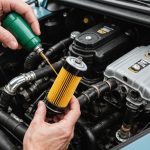Overview of High-Performance Audio System Installation
Upgrading to a high-performance audio system can transform your vehicle’s sound experience, providing clearer, more powerful sound quality. However, audio system installation presents certain challenges, necessitating thorough planning and execution, especially in a vehicle audio setup.
The primary components involved in this installation include speakers, amplifiers, and head units. These elements must be compatible to achieve the desired output and prevent any malfunction. Choosing high-quality components is crucial as it directly impacts sound clarity and longevity of the system.
Also to read : Ultimate guide to flawlessly detailing your car”s engine bay for uk car shows
A common challenge faced during installation is the potential mismatch between the car’s existing electrical system and the new audio equipment. This necessitates a meticulous evaluation of the car’s circuitry and power supply to ensure compatibility and prevent potential electrical issues.
Moreover, proper installation requires understanding how to fit various parts within the limited space available in a vehicle. This precision is essential to avoid potential sound distortion caused by improper placement of audio components.
Topic to read : Tinted windows in uk vehicles: your comprehensive guide to legal regulations
Understanding these key components and challenges can help in executing a successful high-performance audio system installation that meets personal preferences and enhances the driving experience.
Safety Precautions Before Installation
Before starting your audio system installation, emphasising safety is paramount. Disconnecting the car battery is a crucial step. This simple act prevents electrical issues that could damage both the vehicle and the new equipment. By cutting off the power supply, you also protect yourself from accidental shocks while handling the electrical components.
Understanding the risks associated with vehicle modifications can save time and prevent injuries. Handling electrical components requires caution, as improper handling could lead to electrical shorts or fires. Recognising these risks enables you to devise and implement effective prevention strategies.
Utilising protective gear and appropriate tools is indispensable during the installation process. Gloves help protect hands from cuts and shocks, while safety goggles shield eyes from debris or sudden electrical flashes. In addition, having specialised installation tools can make tasks more straightforward and safer.
To ensure a secure and trouble-free installation, consider these safety components essential. This careful planning and adherence to safety measures not only safeguard your equipment and vehicle but also make the process smoother and more agreeable. Remember, taking these precautions lays a strong foundation for your successful audio system installation.
Understanding Vehicle Electrical Systems
To achieve optimal audio system compatibility, understanding common vehicle electrical systems is essential. By familiarising yourself with your car’s circuitry, you can ensure seamless integration of the new audio setup. Most modern vehicles have complex electrical networks, and each component must align perfectly.
Firstly, it’s crucial to assess your car’s power requirements. High-performance audio systems often demand more power than standard systems, and ensuring your vehicle can meet this demand prevents potential issues. Calculating the additional power load helps maintain efficiency and reduces the risk of overloading the electrical system.
Selecting the right wiring and fuses is equally vital. For instance, using wires that can handle higher currents without overheating ensures safety and functionality. Fuses act as a safeguard against electrical surges by breaking the circuit in case of an excess current. Choosing high-quality, compatible components not only bolsters system performance but also extends its lifespan.
Understanding these electrical considerations will significantly enhance your audio system installation, ensuring it functions efficiently and safely within your vehicle. This knowledge forms the foundation for a robust and enduring sound experience.
Steps for Proper Installation
The journey to a successful audio system installation begins with thorough preparation. Here’s a structured approach to ensure your DIY audio setup is seamless and effective.
Preparing for Installation
Begin by collecting all necessary tools and verifying the compatibility of your high-performance audio system. It’s crucial to declutter the workspace in your vehicle and ensure it is adequately lit. Familiarise yourself with the installation guide specific to your audio components, as this will prevent installation errors later.
Installing Components
Once prepared, the next step involves the careful installation of the audio components. Start with mounting the speakers. Position them strategically to optimise sound distribution. Next, install amplifiers and head units, ensuring all fittings are secure. Remember that the placement and alignment of parts are essential to avoid future troubleshooting audio systems.
Finalising Connections
After securely installing the components, focus on ensuring all connections are properly insulated to prevent short circuits. Use a multimeter to check that each connection point provides the correct voltage. This verification step is vital to preempt audio malfunctions. Should you encounter persistent issues, consulting a professional can avoid unnecessary pitfalls.
Choosing the Right Equipment
Selecting the appropriate audio components is pivotal for a successful high-performance audio system installation. Key aspects include matching components for optimal performance, considering quality within budgetary constraints, and ensuring compatibility.
When choosing speakers, focus on those known for clarity and range. High-quality speakers can elevate the sound experience, making music more immersive. Look for speakers that align with your vehicle’s environment, maximizing their acoustic potential.
Amplifiers are crucial for boosting the audio signal. Select amplifiers based on your desired power output and compatible with your current setup. Ensure they have enough channels to support your speakers and any additional audio elements you plan to include.
Receivers act as control hubs for your audio system. Opt for ones with user-friendly interfaces and superior connectivity options, such as Bluetooth and USB. This enhances not only functionality but also ease of use, allowing seamless interaction with modern devices.
When budget is a concern, prioritising core components like speakers and amplifiers is advisable. Explore budget-friendly options that provide excellent sound quality without compromising on durability. Researching and making informed decisions will ensure your vehicle audio setup meets expectations for both performance and longevity.
Enhancing the Installation Process
Improving your audio installation experience can be easy when you have the right installation tools at hand. These tools not only help in precise positioning but also ensure a smoother, more professional-looking setup. Crucial tools include wire cutters, a multimeter, and a trim panel remover. Each tool plays a role in ensuring accuracy and safety during the installation.
Visual Aids and Tutorials
Utilising visual aids and step-by-step tutorials can significantly streamline the installation. These resources guide you visually through the process, preventing common installation mistakes. Platforms offering instructional videos provide in-depth views, making intricate tasks more understandable.
Calibration and Tuning Techniques
After setting up the audio components, enhancing audio performance through calibration and tuning techniques is vital. Calibration involves adjusting settings to achieve balanced sound output, optimising the listening experience. Investing time in these fine-tuning methods can make a notable difference in sound clarity and speaker performance.
For improved accuracy, sound apps and tuning platforms can assist in achieving the desired acoustics. This not only ensures an elevated listening experience in your vehicle audio setup but also maximises component efficacy, creating a harmonious and immersive soundscape.
Common Pitfalls to Avoid
When embarking on an audio system installation, avoiding common pitfalls can determine the success and longevity of your setup. Due to their complexity, vehicle audio setups often face challenges, but identifying and circumventing mistakes can save time and prevent mishaps.
Frequent Installation Errors
One common issue is installation errors, which can stem from overlooking compatibility between various components. For instance, mismatched amplifiers and speakers often lead to suboptimal sound quality or damage. Inadequate grounding due to poor electrical considerations might also cause noise interference or equipment failure.
Troubleshooting Common Issues
For tackling issues with your high-performance audio system, precise troubleshooting is crucial. This process involves checking connections for loose wires, ensuring the correct voltage reaches each component, and confirming no fuses are blown. Systematically addressing these areas helps avoid troubleshooting audio systems frequently.
Seeking Professional Help
Even with thorough preparation, some challenges surpass DIY capabilities. In such instances, opting for professional assistance can prevent further complications. Experts can identify hidden audio installation mistakes, adjust equipment for optimal performance, and ensure compliance with any technical specifications your system might require. Proactivity in addressing potential concerns ensures a smooth audio experience.
Adhering to UK Regulations
When installing a high-performance audio system in your vehicle within the UK, adhering to UK vehicle regulations is crucial to avoid legal complications. Various guidelines ensure that modifications comply with safety and noise standards, promoting a balance between personal enjoyment and public comfort.
Noise and Safety Compliance
Before undertaking audio system installation, acquaint yourself with the specific noise regulations in your area. Excessive volume can result in fines or mandated changes to your setup. Installing a system that maintains the vehicle’s roadworthiness and doesn’t impede operational safety is legally required.
Obtaining Necessary Permits
Some modifications may necessitate obtaining permits or approvals. Specifically, alterations impacting vehicle structure or electrical systems might require official inspection. Ensuring compliance with these standards not only keeps you legally covered but also safeguards against potential audio installation mistakes.
Staying Informed
Keep updated with the latest regulatory changes affecting vehicle audio setup. Being proactive in understanding legislative requirements not only enhances your driving experience but fosters a sense of responsibility towards sound environmental practices. Remember, knowledge of legal audio modifications is a step towards maintaining harmony between your music and the community.











